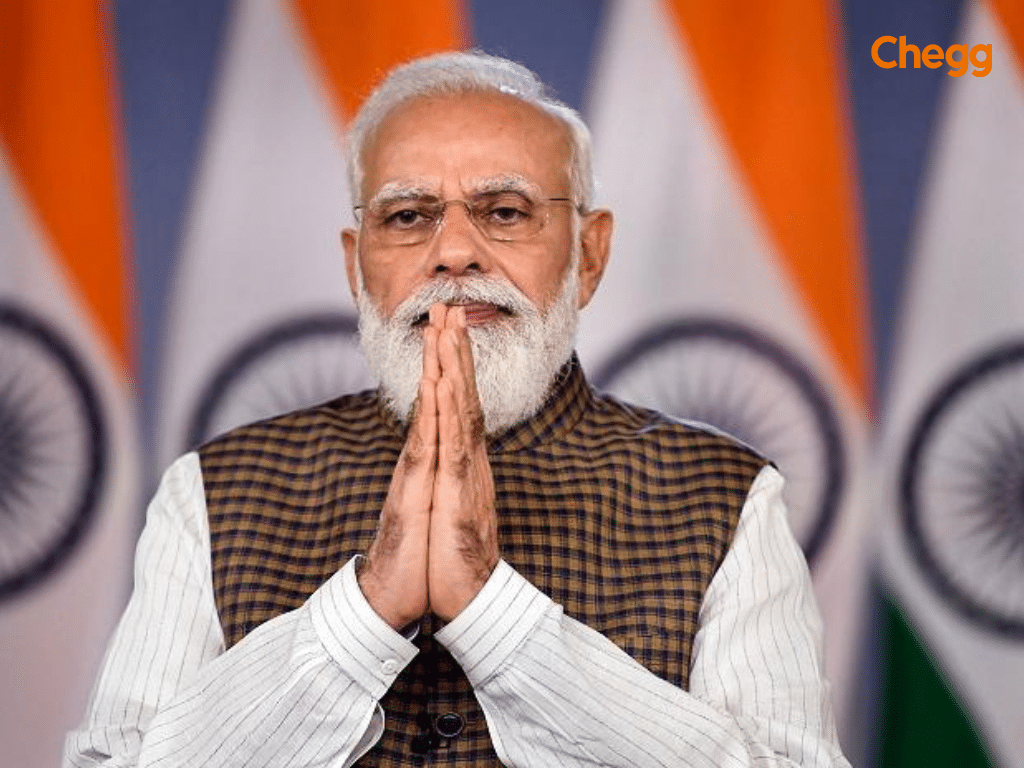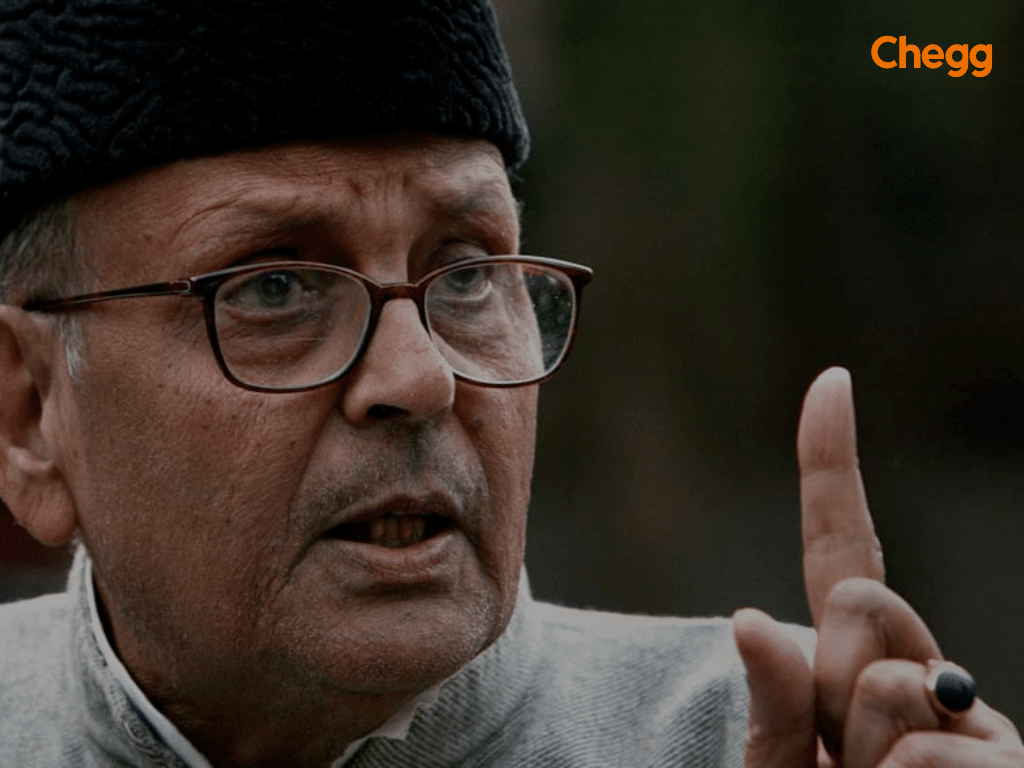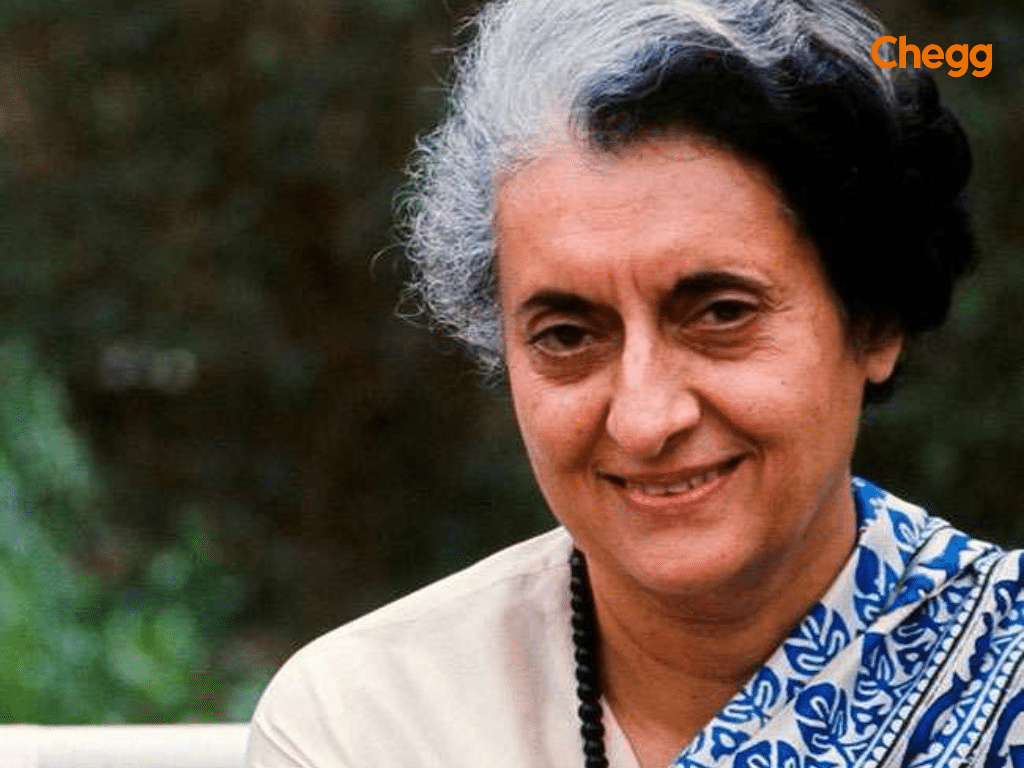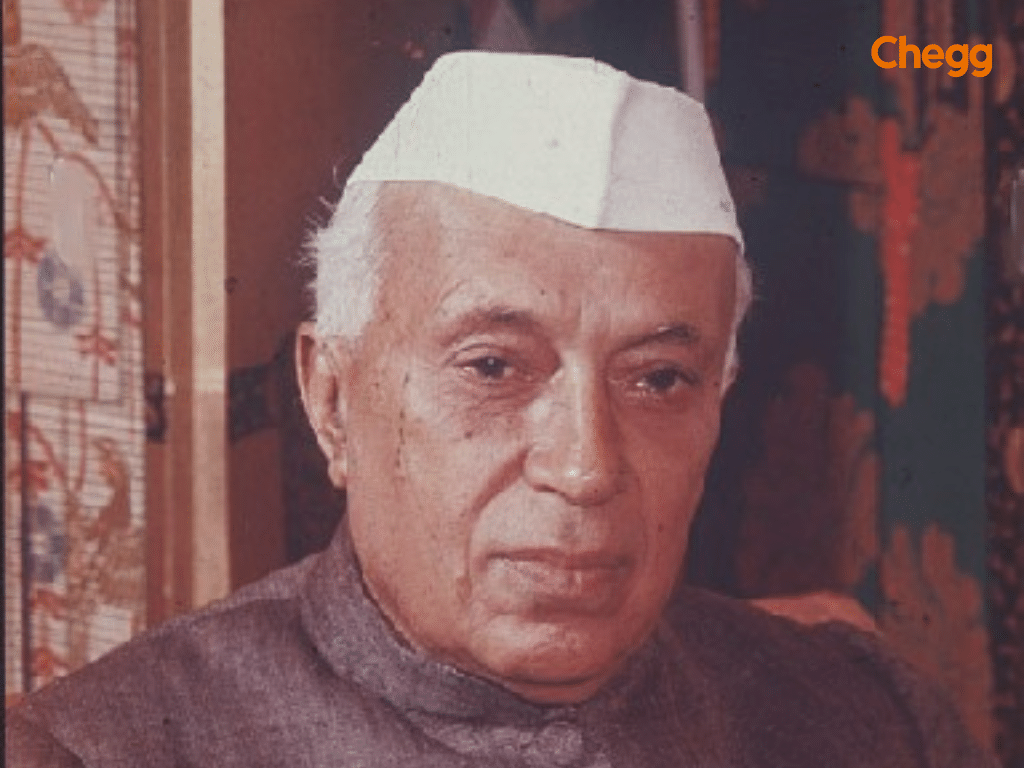
Table of Contents
India is described in the Constitution as a Sovereign, Socialist, Democratic Republic. The Constitution establishes an elected head of state—the President of India—to ensure that the goal of establishing India as a republic is achieved. The leader of the Indian government and the most powerful member of the cabinet is the Prime Minister. Therefore, the prime ministers of India serve as the head of state, the cornerstone of the cabinet, and the compass for the executive branch.
Although the Constitution establishes the office of the President, gives him complete executive authority, and designates him as the chief executive head of the State, the Prime Minister’s office continues to hold the true centre of power. The President will appoint the Prime Minister of India and other ministers on the Prime Minister’s recommendation. If the Lok Sabha has confidence in the Prime Minister, that person holds onto that position.
The most powerful post in the entire political system, the Prime Minister occupies an admirable position. The following list of points is crucial :
| No. | Name | Term Start | Term End | Duration | Political Party |
|---|---|---|---|---|---|
| 1 | Jawaharlal Nehru | 15 Aug 1947 | 27 May 1964 | 16 years, 286 days | Indian National Congress |
| 2 | Gulzarilal Nanda | 27 May 1964 | 9 June 1964 | 13 days | – |
| 3 | Lal Bahadur Shastri | 9 June 1964 | 11 Jan 1966 | 1 year, 216 days | – |
| 4 | Indira Gandhi (1st Term) | 24 Jan 1966 | 24 Mar 1977 | 11 years, 59 days | Indian National Congress (R) |
| 5 | Morarji Desai | 24 Mar 1977 | 28 July 1979 | 2 years, 126 days | Janata Party |
| 6 | Charan Singh | 28 July 1979 | 14 Jan 1980 | 170 days | Janata Party (Secular) |
| 7 | Indira Gandhi (2nd Term) | 14 Jan 1980 | 31 Oct 1984 | 4 years, 291 days | Indian National Congress (I) |
| 8 | Rajiv Gandhi | 31 Oct 1984 | 2 Dec 1989 | 5 years, 32 days | Indian National Congress |
| 9 | V. P. Singh | 2 Dec 1989 | 10 Nov 1990 | 343 days | Janata Dal |
| 10 | Chandra Shekhar | 10 Nov 1990 | 21 June 1991 | 223 days | Samajwadi Janata Party (R) |
| 11 | P. V. Narasimha Rao | 21 June 1991 | 16 May 1996 | 4 years, 330 days | Indian National Congress (I) |
| 12 | Atal Bihari Vajpayee (1st Term) | 16 May 1996 | 1 June 1996 | 16 days | Bharatiya Janata Party |
| 13 | H. D. Deve Gowda | 1 June 1996 | 21 Apr 1997 | 324 days | Janata Dal |
| 14 | Inder Kumar Gujral | 21 Apr 1997 | 19 Mar 1998 | 332 days | – |
| 15 | Atal Bihari Vajpayee (2nd Term) | 19 Mar 1998 | 22 May 2004 | 6 years, 64 days | Bharatiya Janata Party (NDA) |
| 16 | Manmohan Singh | 22 May 2004 | 26 May 2014 | 10 years, 4 days | Indian National Congress (UPA) |
| 17 | Narendra Modi (1st Term) | 26 May 2014 | 30 May 2019 | 5 years, 4 days | Bharatiya Janata Party (NDA) |
| 18 | Narendra Modi (2nd Term) | 30 May 2019 | 9 June 2024 | 5 years, 10 days | Bharatiya Janata Party (NDA) |
| 19 | Incumbent | 9 June 2024 | Present | Ongoing | To be updated |


Modi, born on September 17, 1950, won the May 2014 election and is now serving as Prime Minister among the prime ministers of India list. He heads one of India’s main political parties, the Bharatiya Janata Party (BJP). He serves as both the chairman of the Council of Ministers and the Speaker of the Lower House or Lok Sabha. The 14th and present Prime Minister of India is Prime Minister Narendra Modi.

Manmohan Singh is an economist, bureaucrat, and politician of India. From 2004 to 2014, he presided as India’s thirteenth prime minister. In addition to being one of the first Prime Ministers of India, since Jawaharlal Nehru to be re-elected after serving a full five-year term, Dr. Singh is also the first Sikh to hold the position. His sixth term in the Rajya Sabha is now in effect.

A great leader, Atal Bihari Vajpayee held the position of one of the famous prime ministers of India for three terms: from 1996 for 13 days, from 1998 to 1999 for 13 months, and from 1999 to 2004 for a full term. The oratory abilities of Atal Bihari Vajpayee were well-known. He was a compassionate leader as well as a poet. Generations of Indians have been motivated to enter public service by his outstanding leadership and eloquence.

I.K. Gujral, who took part in the Quit India Movement under Gandhi’s leadership, held the 12th position among the Prime Ministers of India for a brief while between April 21, 1997, to March 19, 1998. His Gujral Doctrine, a foreign policy based on India’s unilateral diplomatic outreach to its neighbours without expecting a response, is what people remember him for. Gujral held the position of Minister of External Affairs.

Haradanahalli Doddegowda Deve Gowda is an Indian politician who served as one of the prime ministers of India from June 1996 to April 1997. Before this, he served as Karnataka’s 14th Chief Minister from 1994 to 1996. He is the National President of the Janata Dal (Secular) party, and he represents the Hassan constituency in Karnataka in the 16th Lok Sabha.

A politician and lawyer from India, PV Narasimha Rao presided at ninth position among the list of prime ministers of India from 1991 to 1996. He oversaw significant economic development, a significant administration, and several domestic events that compromised India’s national security. He is often known as the “Father of Indian Economic Reforms.”

Chandra Shekhar was one of the eighth Prime Ministers of India. He was a well-known socialist politician who was crucial to the nationalization of banks. Mr. Shekahr was well recognized for acting in opposition to the majority in the House and serving as the voice of the poor and oppressed in parliament. He made an effort to help the weak and promoted social reform, and for that, he will always be remembered.

Vishwanath Pratap Singh, also known as V. P. Singh, was a politician from India who served as one of the 7th Prime Ministers of India from 1989 to 1990 as well as the 41st Raja Bahadur of Manda. When Vishwanath Pratap Singh delivered the budget, the Indian economy was booming. In addition to overseeing the end of the inspector raj, he increased income tax exemption limits and cut direct taxes for businesses.

Rajiv Gandhi hold the sixth position among the prime ministers of India from 1984 to 1989. The youngest Indian Prime Minister established a modern India and fundamentally altered it. He made serious attempts to lead the nation into the twenty-first century. He was the one who understood the pulse of a nascent India and guided it toward a better future.

The leader of the farmers’ movement, Chaudhary Charan Singh, served as one of the well-known prime ministers of India from July 28, 1979, to January 14, 1980. Mr Singh put a lot of effort into the welfare of Indian farmers and put up several charity programs. He was a fantastic leader and a man of the highest character. He genuinely cared about the farmers and put in great effort to lift them.

Morarji Ranchhodji Desai presided over as fourth prime minister among the prime ministers of India list. He was an outstanding reformer, institution builder, and social worker. He served as the premier of the Janata Party’s government. In 1930, he became a member of the Civil Disobedience Campaign and actively took part in the freedom movement. Morarji Desai was regarded as a man of values who, for many years, stood ramrod straight in Indian politics

The second-longest term among the prime ministers of India was held by Indira Priyadarshini Gandhi, the first and only female prime minister of India. She was a prominent member of the Indian National Congress and an Indian politician. She was chosen to serve as India’s third prime minister in the Prime Ministers of India list in 1966. Every Indian will always remember her for her unwavering bravery and devotion to the country.

A politician and economist from India with a focus on labour issues, Gulzari Lal Nanda was one of the honourable Prime Ministers of India after the passing of Lal Bahadur Shastri in 1966 and Jawaharlal Nehru in 1964. He served as one of the prime ministers of India for two brief terms. In 1997, he received the highest civilian honour in India, the Bharat Ratna.

Lal Bahadur Srivastava often referred to as Lal Bahadur Shastry, is regarded as one of India’s greatest leaders and liberation warriors. In 1964, following Jawaharlal Nehru’s passing, he held the second position in the list of Prime Ministers of India. Known as a wise man with great fame, he served as the home minister and the minister of external affairs during a selfless, spotless career.

The first prime minister was Pandit Jawahar Lal Nehru among the prime ministers of India. He was an important person in India around the middle of the 20th century. Jawaharlal Nehru was an anti-colonial patriot, secular humanist, social democrat, and also author. In the 1930s and 1940s, Nehru played a key role in leading the Indian nationalist movement.
Now you know all about the prime ministers of India. The Position of the Indian Prime Minister is one of a lot of responsibility, duties and power. To check out the list of Presidents of India. Click Here
Each Prime Minister has left a unique mark on India’s international standing, contributing to its role as a major global player, while also dealing with various diplomatic hurdles.
These examples highlight how different Ministers of India have managed crises through various strategies, with all Prime Ministers of India responding to the unique challenges of their time.
The first prime minister of India was Pandit Jawaharlal Nehru. India has had 14 prime ministers since 1947, 15 if you include Gulzarilal Nanda who served as prime minister twice. The first was Jawaharlal Nehru of the Indian National Congress party, who took office on August 15, 1947, the day India gained independence from the British Raj.
Narendra Modi is currently the Prime Minister of India. On May 30, 2019, Modi began his second term as prime minister of India. With a term that ran from October 2001 to May 2014, he also holds the distinction of becoming Gujarat’s Chief Minister for the longest period.
Indira Priyadarshini Gandhi was a prominent member of the Indian National Congress and a politician from India. She was the country’s first and only female prime minister when she was chosen to serve as India’s third prime minister in 1966.
The record for serving as prime minister the longest in any nation belongs to Pandit Jawaharlal Nehru, who was India’s first leader. From August 5, 1947, through May 27, 1964, Jawaharlal Nehru served as prime minister, a record (16 years and 286 days).

Authored by, Amay Mathur | Senior Editor




Amay Mathur is a business news reporter at Chegg.com. He previously worked for PCMag, Business Insider, The Messenger, and ZDNET as a reporter and copyeditor. His areas of coverage encompass tech, business, strategy, finance, and even space. He is a Columbia University graduate.
Editor's Recommendations
Chegg India does not ask for money to offer any opportunity with the company. We request you to be vigilant before sharing your personal and financial information with any third party. Beware of fraudulent activities claiming affiliation with our company and promising monetary rewards or benefits. Chegg India shall not be responsible for any losses resulting from such activities.
Chegg India does not ask for money to offer any opportunity with the company. We request you to be vigilant before sharing your personal and financial information with any third party. Beware of fraudulent activities claiming affiliation with our company and promising monetary rewards or benefits. Chegg India shall not be responsible for any losses resulting from such activities.